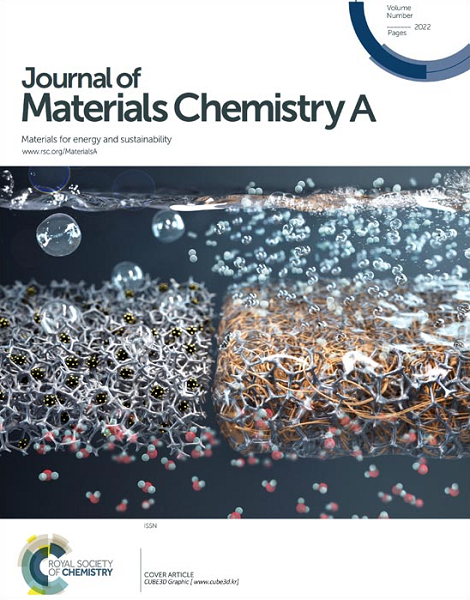Regulation of Microcrystalline and Pore Structures in Pitch-Based Hard Carbon via Liquid-Phase Crosslinking-Assisted Grain Boundary Etching to Enhance Sodium Storage Performance
IF 10.7
2区 材料科学
Q1 CHEMISTRY, PHYSICAL
引用次数: 0
Abstract
Heavy oils, known for their high carbonization yield, typically form highly ordered structures with narrow interlayer spacing of carbon layer during carbonization, which limits their sodium storage performance. To address this limitation, we propose a strategy that modifies the carbonization pathway by coupling liquid-phase crosslinking with K₂CO₃ activation. This approach effectively modulates the microcrystalline state and pore structure while inhibiting the growth and orientation of crystal domains. During the liquid-phase crosslinking of raw materials, oxygen radicals would mediate the formation of non-planar macromolecules with highly reactive cross-linked structure. This structure would induce the formation of numerous defect sites within the carbon layers during K₂CO₃ activation, which, through a synergistic enhancement of etching around boundary of carbon-layer stacks, effectively prevents the fusion and growth of stacks. Consequently, the graphite-like microcrystals formed during the carbonization process exhibit random orientation. Additionally, t the vacancy defects within the carbon layers are prone to inducing layer bending at the high temperatures of carbonization, which contributes to the formation of closed pores, particularly when the carbon layers are of moderate size. As a result, the optimized sample (HC325) maintains a high reversible capacity of 328.3 mAh g-1 after 200 cycles at a current density of 100mA g-1, with the plateau capacity accounting for up to 68%. This study provides novel insights into the modulation of the carbon microcrystalline structure and pore architecture of Pitch-Based Hard Carbon, offering guidance for the development of high-performance hard carbon anodes.求助全文
约1分钟内获得全文
求助全文
来源期刊

Journal of Materials Chemistry A
CHEMISTRY, PHYSICAL-ENERGY & FUELS
CiteScore
19.50
自引率
5.00%
发文量
1892
审稿时长
1.5 months
期刊介绍:
The Journal of Materials Chemistry A, B & C covers a wide range of high-quality studies in the field of materials chemistry, with each section focusing on specific applications of the materials studied. Journal of Materials Chemistry A emphasizes applications in energy and sustainability, including topics such as artificial photosynthesis, batteries, and fuel cells. Journal of Materials Chemistry B focuses on applications in biology and medicine, while Journal of Materials Chemistry C covers applications in optical, magnetic, and electronic devices. Example topic areas within the scope of Journal of Materials Chemistry A include catalysis, green/sustainable materials, sensors, and water treatment, among others.
 求助内容:
求助内容: 应助结果提醒方式:
应助结果提醒方式:


